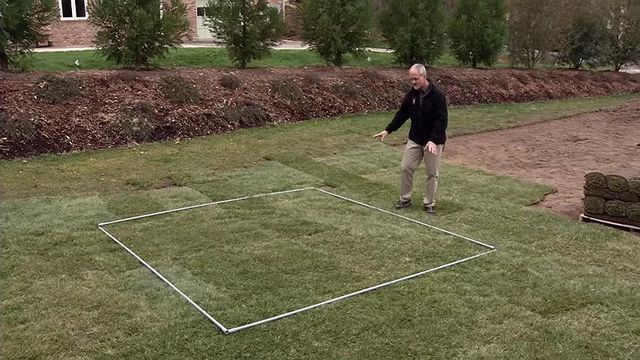Tips to properly water sodded lawns
Much like overeating, snacking at inopportune times or going too long between meals, it's possible to over- or under-do it with our lawns when it comes to watering.
Posted — UpdatedMuch like overeating, snacking at inopportune times or going too long between meals, it's possible to over- or under-do it with our lawns when it comes to watering. In regards to maintaining a healthy sodded lawn, proper watering techniques must be interwoven with proper timing and amounts of watering. Below, you’ll find useful information on options of how to properly water turfgrass sod.
Avoid hand watering if possible because it cannot guarantee necessary uniformity. Most people do not have the patience, time or "eye" to adequately measure what is being applied across large areas of lawn when applied by hand. Possible exceptions to this guideline would be the need to water the surface of the grass to cool it or to provide additional water near buildings or other heat-reflecting surfaces.
In-ground irrigation systems are far more reliable than hand watering but also require professional design and installation. They also need routine adjustments and regular maintenance to be most effective and efficient, so don’t have it set up and then forget about it - have an irrigation specialist conduct a thorough system checkup every spring. This will take into account changing seasonal water requirements and help maximize turf growth.
Preset in-ground systems without an automatic rain sensor shutoff can potentially operate during or following rain accumulation, and in-ground sprinkler heads can get out of alignment and apply water to the sidewalk, street or house-siding, rather than to the lawn. Basically, just be vigilant if you have an in-ground irrigation system installed and don’t assume it will always take care of itself.
Above ground, hose-end sprinklers range in complexity, cost and durability and are highly portable. They can work well when properly placed on the lawn and adequately maintained.
- Impulse sprinklers water relatively close to the ground to minimize evaporation and deliver water in a circular pattern.
- Oscillating sprinklers deliver water in a rectangular pattern. Some models can be adjusted to restrict the arm movement to irrigate a partial section of the full rectangle.
- Whirling sprinklers have spinning arms with nozzles at the end that deliver a stream of water across either a circular or square pattern as the arms rotate.
- Alternate whirling sprinklers design feature spinning fan-like blades that channel water delivered from perforations in the base across a circular or square pattern.
- Turret sprinklers feature an assortment of watering patterns that can range from full- to part-circle, to square or rectangular. They give you the flexibility to select the pattern to match the area you wish to irrigate and allow you to irrigate multiple area shapes with one sprinkler.
- Traveling sprinklers follow a custom route that you create across the lawn area to be irrigated. They work well for large open spaces and most are designed with shutoffs that are automatically activated at the end of the path.
No matter which direction you choose in regards to watering your lawn, focus on uniformity and consistency. If you notice portions of your lawn that are either overly dry or wet, check to be sure your irrigation system is working properly and make any corrections needed.
For maximum efficiency of in-ground systems, consider an irrigation audit conducted by a Certified Landscape Irrigation Auditor.
Copyright 2024 by Capitol Broadcasting Company. All rights reserved. This material may not be published, broadcast, rewritten or redistributed.






